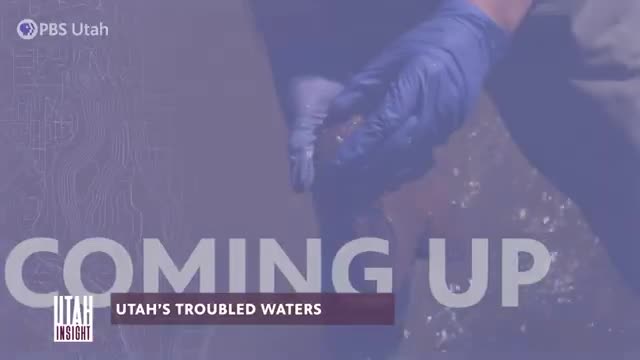Utah's waterways face deadly algae threat as pollution rises

This article was created by AI summarizing key points discussed. AI makes mistakes, so for full details and context, please refer to the video of the full meeting. Please report any errors so we can fix them. Report an error »

Utah's waterways are facing increasing threats from harmful algal blooms and a newly identified form of toxic algae, raising significant public health concerns. Recent reports indicate that the presence of benthic cyanobacteria, a type of harmful algae that can produce deadly neurotoxins, is becoming more widespread in the state’s rivers and lakes.
Health warnings are currently in effect for several areas, including the Virgin River in Zion National Park and Provo Bay at Utah Lake, where officials advise against water recreation and consuming fish. The alarming rise in these toxic algae mats has been linked to mysterious dog deaths in the region, prompting urgent investigations by the Utah Department of Environmental Quality (DEQ).
Dr. Bauner from the DEQ highlighted the dangers posed by these algae, which can paralyze the respiratory system and lead to death within minutes if ingested. The mats, which can appear as carpet-like coatings or sticky substances on the water's surface, are particularly hazardous to pets, as they are attracted to the musty odor and may consume the toxic material.
The DEQ is actively monitoring the situation, conducting tests to identify the species of cyanobacteria present and assessing toxin production. While the spring runoff has temporarily cleared some areas, experts warn that the conditions conducive to algal growth—such as excess nutrients and stagnant water—could lead to a resurgence of these harmful blooms as temperatures rise in the summer.
Public awareness is deemed crucial in combating this issue, with officials urging residents to familiarize themselves with the appearance of harmful algae to avoid exposure. The DEQ, alongside local health departments and research institutions, is working to disseminate information and educate the public on how to safely enjoy Utah's natural water bodies.
As the state grapples with these environmental challenges, the collaboration between scientists, government agencies, and the community will be vital in safeguarding public health and preserving the integrity of Utah's waterways.
Health warnings are currently in effect for several areas, including the Virgin River in Zion National Park and Provo Bay at Utah Lake, where officials advise against water recreation and consuming fish. The alarming rise in these toxic algae mats has been linked to mysterious dog deaths in the region, prompting urgent investigations by the Utah Department of Environmental Quality (DEQ).
Dr. Bauner from the DEQ highlighted the dangers posed by these algae, which can paralyze the respiratory system and lead to death within minutes if ingested. The mats, which can appear as carpet-like coatings or sticky substances on the water's surface, are particularly hazardous to pets, as they are attracted to the musty odor and may consume the toxic material.
The DEQ is actively monitoring the situation, conducting tests to identify the species of cyanobacteria present and assessing toxin production. While the spring runoff has temporarily cleared some areas, experts warn that the conditions conducive to algal growth—such as excess nutrients and stagnant water—could lead to a resurgence of these harmful blooms as temperatures rise in the summer.
Public awareness is deemed crucial in combating this issue, with officials urging residents to familiarize themselves with the appearance of harmful algae to avoid exposure. The DEQ, alongside local health departments and research institutions, is working to disseminate information and educate the public on how to safely enjoy Utah's natural water bodies.
As the state grapples with these environmental challenges, the collaboration between scientists, government agencies, and the community will be vital in safeguarding public health and preserving the integrity of Utah's waterways.
View full meeting
This article is based on a recent meeting—watch the full video and explore the complete transcript for deeper insights into the discussion.
View full meeting